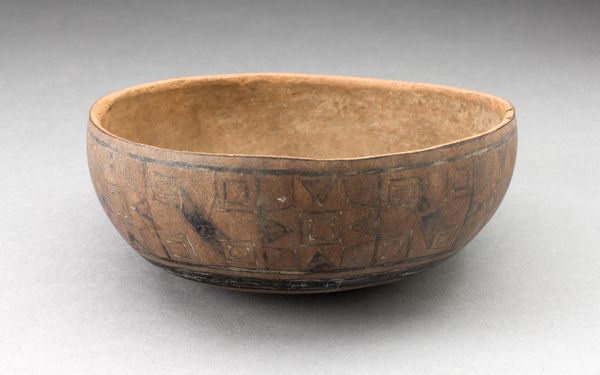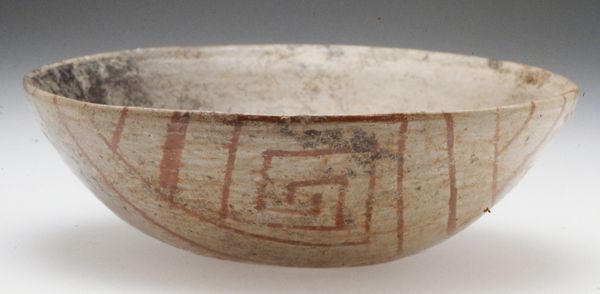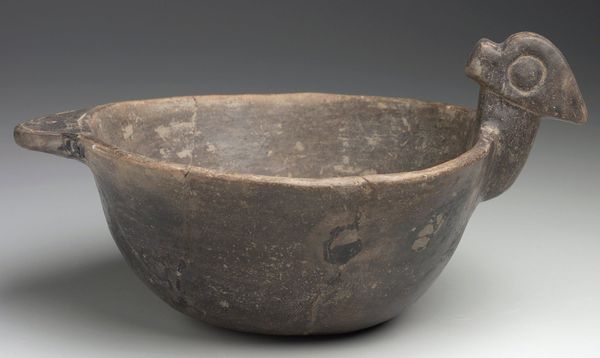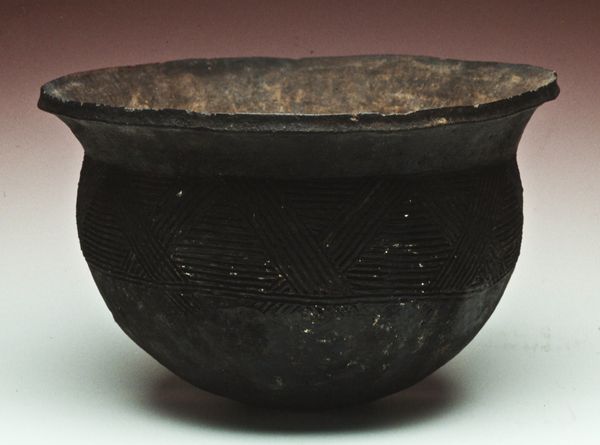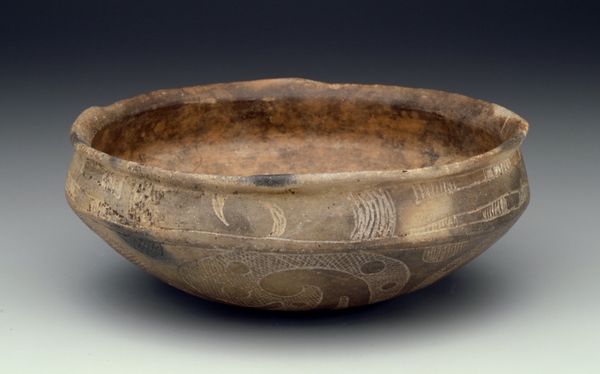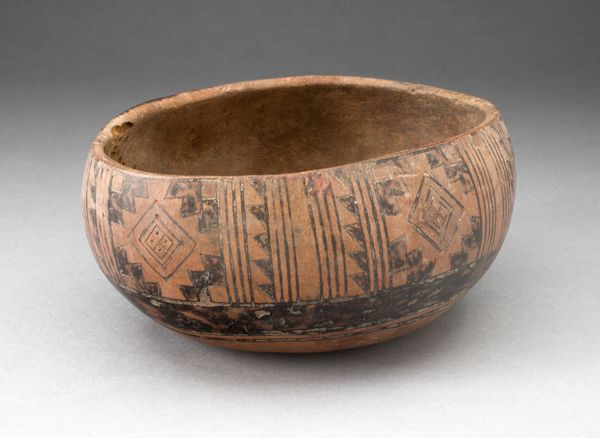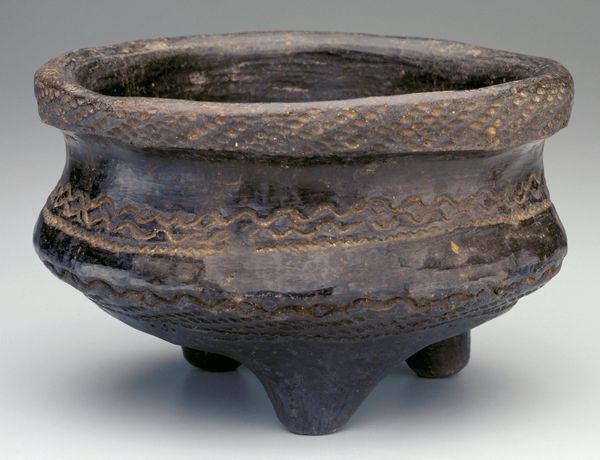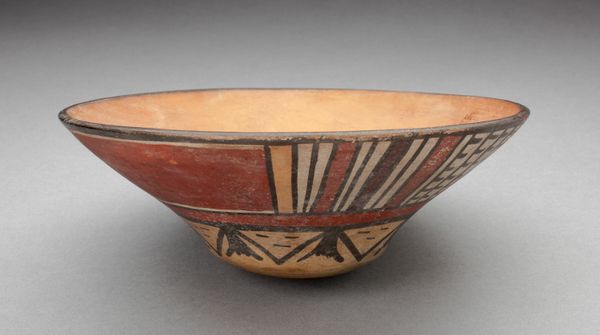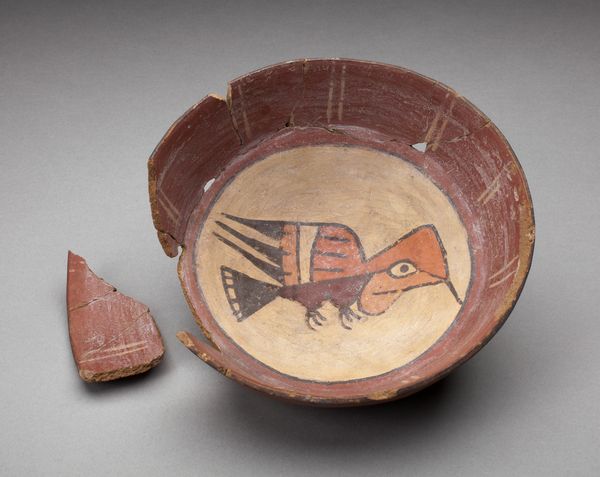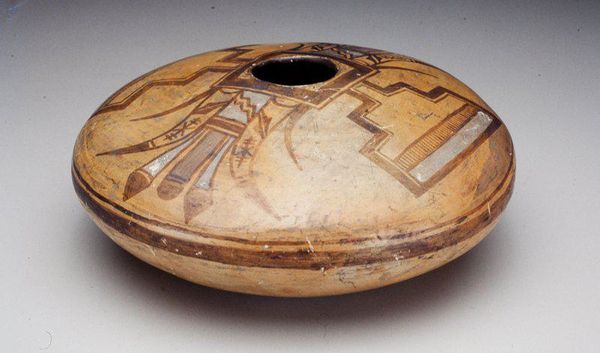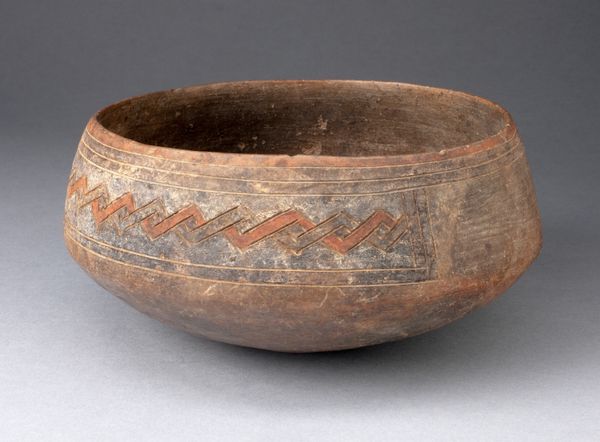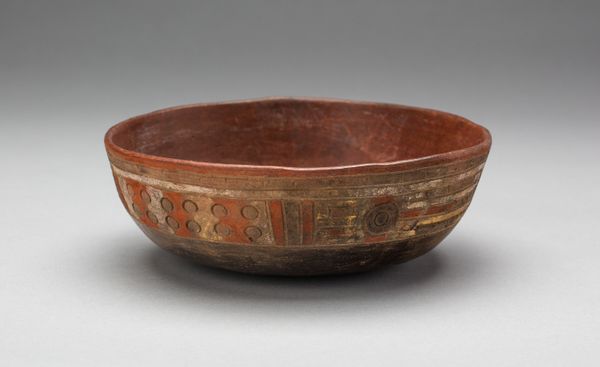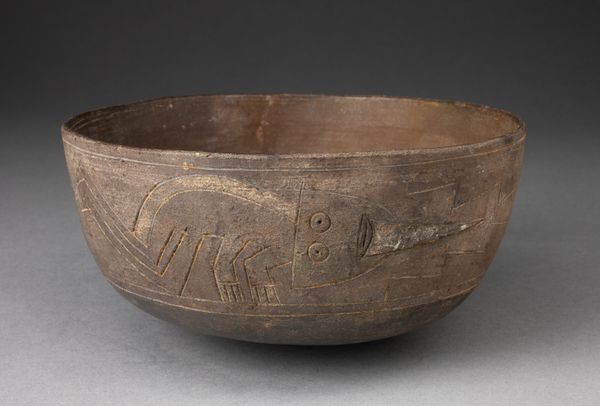
ceramic, earthenware
#
ceramic
#
earthenware
#
geometric
#
ceramic
#
line
#
indigenous-americas
Dimensions: 3 1/2 x 9 3/4 in. (8.89 x 24.77 cm)
Copyright: Public Domain
Curator: Here we have a Mimbres bowl dating back to around 1200, currently residing in the Minneapolis Institute of Art. It's crafted from earthenware and features striking painted decoration. Editor: My first impression is one of profound simplicity and quiet contemplation. The muted tones and delicate lines seem to whisper rather than shout. Curator: Indeed. Let's examine the composition more closely. We see the bowl divided into sections by stark geometric lines. Notice how the negative space becomes just as crucial as the lines themselves, creating an almost rhythmic visual interplay. Editor: I’m also drawn to the single wasp motif in the central panel. While it seems simple at first glance, one can imagine its significance in Mimbres cosmology—perhaps a symbol of industriousness, or a messenger between worlds. Curator: Precisely. The semiotic weight is palpable. The creators skillfully employ repetition, the interplay of symmetry and asymmetry, and tonal variation to invite our minds to read the artwork as a whole, to experience it. Editor: Absolutely. But what were the stories circulating in Mimbres society at that time? What knowledge systems or societal dynamics gave rise to such objects? Perhaps certain members within the group controlled ceramic production or this bowl represents more widely held cultural knowledge. Curator: Context, of course, illuminates. Nevertheless, its immediate visual language, regardless of time, displays intentionality in both its form and its carefully rendered decorations. This induces a feeling of something structured but at peace with the imperfections of its time. Editor: I agree that the imperfections and limited materials point towards a humanness. The bowl's narrative resides in those marks of creation—and also in the stories and memories it carried with those who created it and used it. It speaks to community, not merely aesthetics. Curator: It’s the masterful tension, that balance between structure and symbol that offers sustained viewing. The design, while simplistic at times, feels sophisticated with continued observation. Editor: A cultural artifact is so much more than its physical manifestation. As it stands before us today, removed from the lives of its makers, we cannot fully see it. I leave today asking more questions than I came with. Curator: And in that questioning, the artwork continues to exist beyond its formal constraints. Its beauty is, ironically, what binds it and allows for further engagement.
Comments
No comments
Be the first to comment and join the conversation on the ultimate creative platform.
